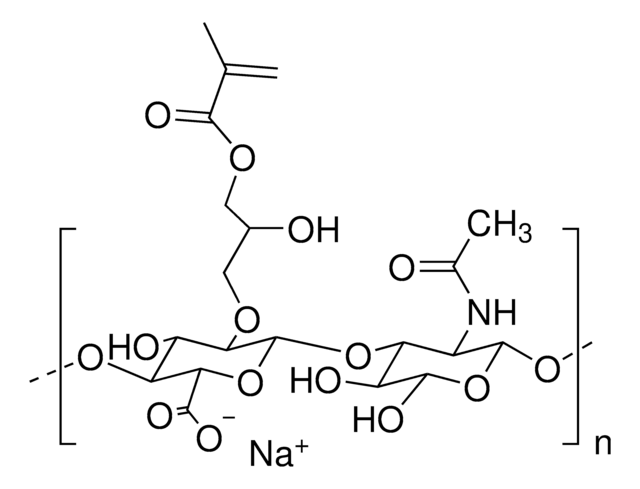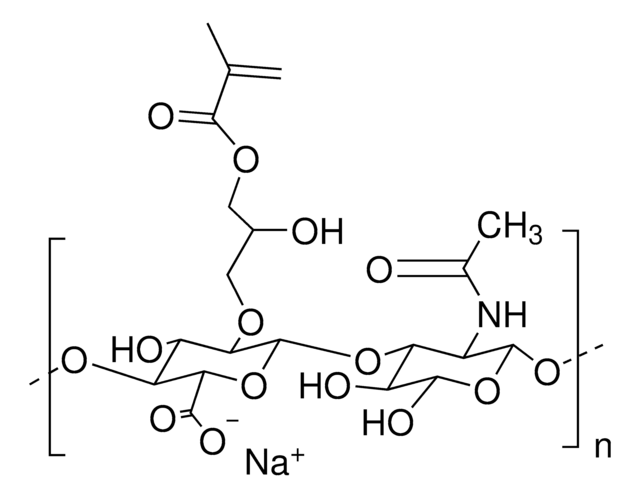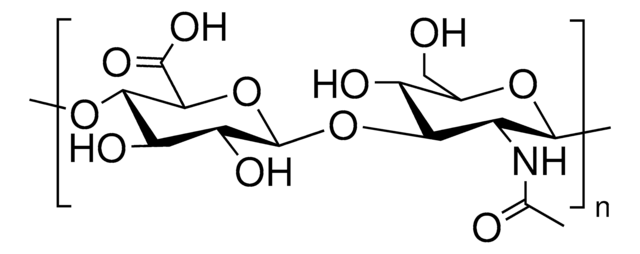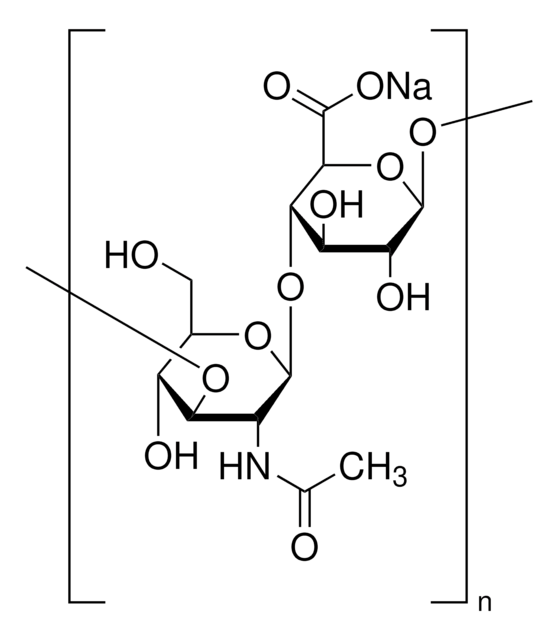Wichtige Dokumente
914304
Hyaluronic acid methacrylate
average degree of substitution 35%, average Mw 175000
Synonym(e):
Functioanlized hyaluronic, HA methacrylamide, HAMA, Hyaluronic acid MA
About This Item
Empfohlene Produkte
Beschreibung
NMR: Conforms to structure
Qualitätsniveau
Form
(powder or chunk(s) or fibers)
Mol-Gew.
average Mw 175000
Farbe
white to off-white
Lagertemp.
2-8°C
Verwandte Kategorien
Anwendung
Lagerklassenschlüssel
11 - Combustible Solids
WGK
WGK 3
Flammpunkt (°F)
Not applicable
Flammpunkt (°C)
Not applicable
Hier finden Sie alle aktuellen Versionen:
Analysenzertifikate (COA)
Die passende Version wird nicht angezeigt?
Wenn Sie eine bestimmte Version benötigen, können Sie anhand der Lot- oder Chargennummer nach einem spezifischen Zertifikat suchen.
Besitzen Sie dieses Produkt bereits?
In der Dokumentenbibliothek finden Sie die Dokumentation zu den Produkten, die Sie kürzlich erworben haben.
Unser Team von Wissenschaftlern verfügt über Erfahrung in allen Forschungsbereichen einschließlich Life Science, Materialwissenschaften, chemischer Synthese, Chromatographie, Analytik und vielen mehr..
Setzen Sie sich mit dem technischen Dienst in Verbindung.







